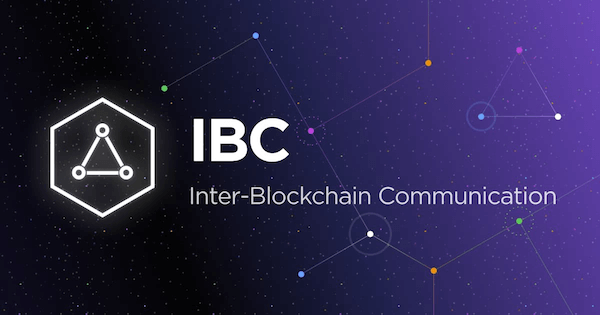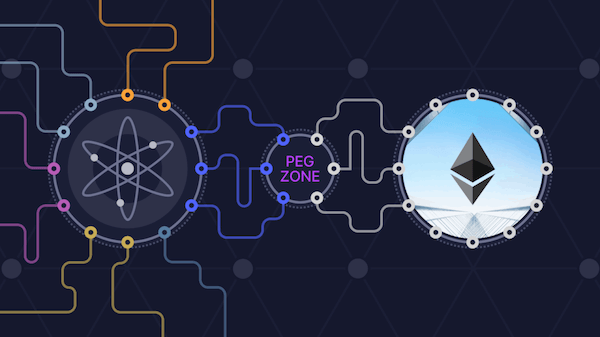Launched in May 2021, IBC stands at the forefront of the Cosmos ecosystem, revolutionizing the way distinct blockchains interact.
Table of Contents
What is Inter Blockchain Communication (IBC)?
The Inter-Blockchain Communication Protocol (IBC) is designed for managing the authentication and transportation of data between two separate blockchains. IBC relies on a minimal set of functions as outlined in the Interchain Standards (ICS).

It's worth noting that these specifications do not impose constraints on the network topology or consensus algorithm, allowing IBC to be compatible with a diverse array of blockchains or state machines. The IBC protocol offers an open and permissionless mechanism for transmitting data packets between blockchains, which sets it apart from the majority of trusted bridging technologies. The security of IBC is inherently linked to the security measures implemented by the participating blockchains.
How Does the Cosmos IBC Operate?
The Inter-Blockchain Communication Protocol (IBC) is an open-source protocol designed for the authentication and seamless transport of data between blockchains. IBC enables dissimilar blockchains to securely communicate with each other, facilitating the exchange of data, messages, and tokens without the need for trust.
Transport Layer
The transport layer handles the transportation, verification, and sequencing of data packets transmitted through IBC. It does not dictate what data is being transmitted or how it should be understood by the receiving chain. From its standpoint, the transferred data is treated as a sequence of bytes. Its key components comprise light clients, relayers, connections, and channels.

Light clients serve as representations of a blockchain, focusing on verifying block headers without storing the entire blockchain history or executing transactions. This design ensures efficiency in storage and computation. In IBC interactions, two chains maintain light clients of each other, enabling message exchange without intermediary parties. Instead of directly transmitting messages, chains store message-containing data packet hashes in their state machines. Relayers then take on the task of conveying these messages to the target chains. The relayer function is open to anyone due to its permissionless nature.
Connections establish links between light clients across different chains, while channels facilitate data transfer between modules situated on different chains. As a result, connections are specific to a chain, while channels cater to specific modules.
Application Layer
The application layer, visible to users, encompasses applications utilizing the transport layer. These applications encompass various assets like tokens, NFTs, and oracles. IBC incorporates its own token standard, akin to the ERC-20 standard. This ICS-20 standard defines the structure of data packets and how they should be understood by receiving chains. For instance, in token transfers, data packets carry details about the sender, receiver, token amount, and denomination.
In essence, IBC functions like a postal system for blockchains. Its transport layer acts as the intermediary that forwards communication between different senders and recipients—representing distinct blockchains. However, the transport layer does not convey information about the content of the message or its interpretation.
Similarly, data packets transmitted within the IBC protocol mimic this process, moving from one chain to another. These packets include particulars about the sender (identified by the channel ID) and the recipient (identified by the counterparty channel ID). The receiving application then deciphers the data packet's contents.
How Secure Is IBC?
IBC ensures security through two main components: Interchain Accounts and Interchain Security.

Interchain Accounts facilitate seamless interaction between chains without requiring users to switch between them. This means that actions like cross-chain interactions on a second blockchain can be conducted "remotely" from the first blockchain. These accounts enhance compatibility between the host chain and the controlling chain.
Interchain Security, on the other hand, allows blockchains within the IBC network to borrow security measures from other chains. For example, newly established blockchains can utilize the validator set of the Cosmos hub without needing to create their own from scratch. These mechanisms enhance interoperability among blockchains while maintaining a high level of security. This approach enables each chain within the IBC ecosystem to focus on specific use cases, contributing to the characterization of the Cosmos hub as the "blockchain of blockchains."
Conclusion:
Cosmos IBC's profound impact lies in revolutionizing blockchain interaction, enabling diverse chains to harmoniously communicate. Its two-tier structure, coupled with meticulous design, fortifies interoperability while minimizing complexity.
Additionally, IBC's emphasis on security through Interchain Accounts and Interchain Security underscores its commitment to safeguarding assets and interactions. As we traverse the ever-evolving landscape of blockchain technology, the IBC protocol stands as a testament to innovation, collaboration, and seamless connectivity across the ecosystem.
In summary, Inter-Blockchain Communication (IBC) emerges as a game-changing solution, revolutionizing blockchain interaction and interoperability.






